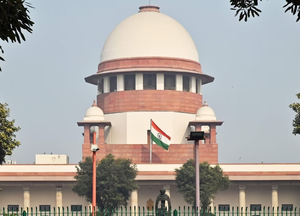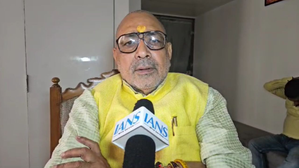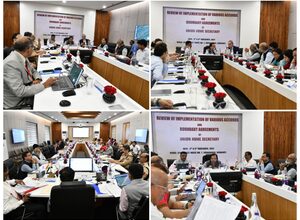Assam CM questions Congress over their opposition to create tribal belts
Guwahati, Sep 14 (IANS) Assam Chief Minister Himanta Biswa Sarma on Saturday criticised the Congress for their opposition in identifying tribal blocks and belts in the state.
He told reporters here, “The tribal blocks were first created in Assam by the Congress government. However, now they have been opposing our initiative of creating some additional micro-level tribal blocks and belts to safeguard the interest of Indigenous people.”
Sarma said that the Congress party should clear its stand on this issue.
“I advise the Congress leaders to make their points clear about whether they want to work for the interest of tribal people in the state. I am stating it clearly that once a law is being enacted regarding the creation of a new tribal block, the Congress party cannot oppose that,” he added.
Notably, the Assam government earlier decided to create new micro-tribal blocks and belts. These will be created in addition to the state’s twelve current belts and blocks.
Depending on public desire, villages with more than 80 per cent Scheduled Caste (SC) and Scheduled Tribe (ST) of population may be granted this classification.
A cabinet committee has been formed to identify such villages, and its report is anticipated by September 15.
This programme is thought of as a proactive step towards safeguarding the preservation of Assam’s rich cultural heritage.
The Assam Land and Revenue Regulation (Second Amendment) Bill, 2024 was passed in the state assembly recently which introduced Chapter 12 into the Assam Land and Revenue Regulation Act, 1886, allowing the government to designate a ‘Heritage Belt and Block’ around iconic structures over 250 years old.
The legislation restricted the selling or buying of land within a 5 km radius of these heritage sites other than the residents who have lived there for at least three generations.
The Chief Minister said: “No outsider may buy land within five kilometres of iconic structures that are at least 250 years old. Persons are allowed to purchase and sell land in the protected area if they have lived there for three generations. The bill is secular and apolitical. A 250-year-old, renowned building could be a church, masjid, temple, or satra.”
“The new provision makes no mention of Muslims or Hindus. I am also currently unable to buy land close to the Barpeta Satra. The Act now includes this additional clause in order to protect cultural landmarks such as Batadrawa Than, Barpeta Satra, Rangghar, Kareng Ghar, Talatal Ghar, Charaideo Maidam, and others from the invasion of outsiders,” he added.
–IANS
tdr/dan




